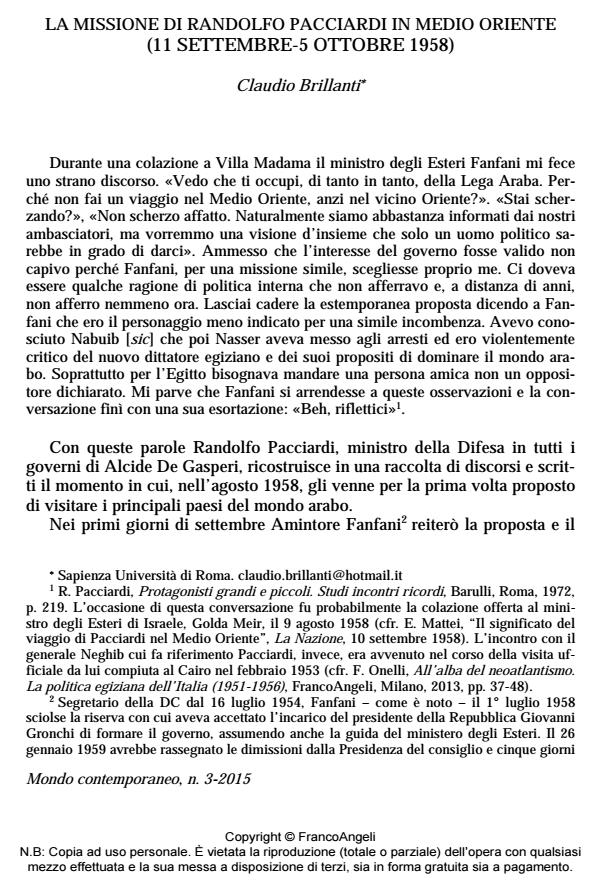Randolfo Pacciardi’s mission in the Middle East (September 11th-October 5th, 1958)
Journal title MONDO CONTEMPORANEO
Author/s Claudio Brillanti
Publishing Year 2016 Issue 2015/3
Language Italian Pages 41 P. 35-75 File size 190 KB
DOI 10.3280/MON2015-003002
DOI is like a bar code for intellectual property: to have more infomation
click here
Below, you can see the article first page
If you want to buy this article in PDF format, you can do it, following the instructions to buy download credits

FrancoAngeli is member of Publishers International Linking Association, Inc (PILA), a not-for-profit association which run the CrossRef service enabling links to and from online scholarly content.
Between September 11th and October 5th, 1958 Randolfo Pacciardi visited the main capitals of the Middle East and met all the most important executives of the Arab world and of Israel, among which Nasser and Ben Gurion, Kassem and King Saud, King Hussein and Camille Chamoun. The Premier and Ministry of Foreign Affairs Amintore Fanfani had entrusted him with this task, even if not officially. The mission took place only few months after some important events had changed the Middle Eastern context: the founding of the United Arab Republic, the coup d’état which had overthrown the pro-British monarchy in Iraq and the Anglo-American military intervention in Lebanon and Jordan. This essay contextualizes Pacciardi’s mission in the Italian and Middle Eastern situation and retraces its stages through the unpublished and detailed reports written by this important representative of the Italian Republican Party. While the essay identifies the reasons that led Fanfani to entrust him with this task, it also puts particular emphasis on Pacciardi’s cleverness in carrying out his Middle-Eastern talks.
Keywords: Randolfo Pacciardi, Italian foreign policy, Amintore Fanfani, Middle East, Gamal Abd el-Nasser, Italian Republican Party
Claudio Brillanti, La missione di Randolfo Pacciardi in Medio Oriente (11 settembre-5 ottobre 1958) in "MONDO CONTEMPORANEO" 3/2015, pp 35-75, DOI: 10.3280/MON2015-003002